
6 SWOT Analysis Templates for Product Managers
Product teams know a lot about their products. It is a requirement for doing the job well. It can also be a curse. Why, you ask? Because you cannot know what you do not know. (Yes, a bit of a riddle.) This is one of the best things about a SWOT analysis — it forces your product team to step back and consider your product and the market from a different perspective.
Product managers know that completing a SWOT analysis is invaluable for revealing what their product is doing well in the market and where it can be improved.
As you may well know, SWOT stands for strengths, weaknesses, opportunities, and threats. It is often used to understand the position of a company, but it can also be used to assess a product.
Completing strategic market analyses is an important part of your work as a product manager. The insights you gain can help guide annual planning, inform a product launch, and build additional strategic models to visualize where your product is headed.
This is exactly why we have strategic planning models in Aha! — including Lean Canvas, SWOT, Porter’s 5 Forces, Segment Profile, and 9 Ps Marketing Matrix. We also recently added the ability for you to customize these proven models to fit your company’s needs so you can create your own interactive strategic planning templates.
We believe that all product managers should set a product strategy and tie it to the team’s work.
That is why we built the Aha! application. But we know that just because you are reading this blog post does not mean you are in our free 30-day trial or are a paying customer with access to all the interactive models that we provide. No matter. Whether you choose to use Aha! or not, we are passionate about helping product managers build better products and be happy doing it.
So, our team of former product managers hand-selected a library of SWOT analysis templates to help you out. In addition to the interactive strategy models available in Aha! for you to use, we built out these SWOT templates and give them to you for free to download.
To make sure you get the most out of these templates, take a moment to consider why and how each one is used. Here is how your product team can use SWOT templates as a planning tool:
Identify and categorize Start by identifying and categorizing your SWOT factors. This deceptively simple step requires research and deep thinking to define what is relevant and precisely how it relates to your product. Once that hard work is done, you can plug the results into the simple matrix template, like the one shown below. This gives your audience a quick overview of your product’s competitive landscape.
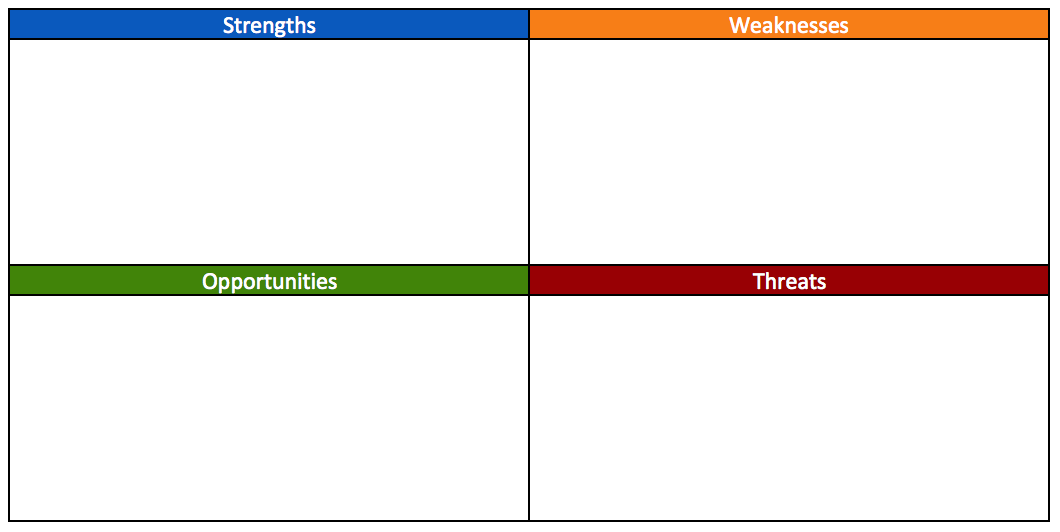
Establish context The goal of this strategic exercise is for you and your audience to quickly gain insights from the data and information presented. But you can choose to go a step further than the simple matrix and include summaries of key information. In the example below, you could add text related to business planning in the bubbles around the matrix. However you choose to present the information, you will want to put the components and factors in context — for instance, by relating findings to your overall strategy.
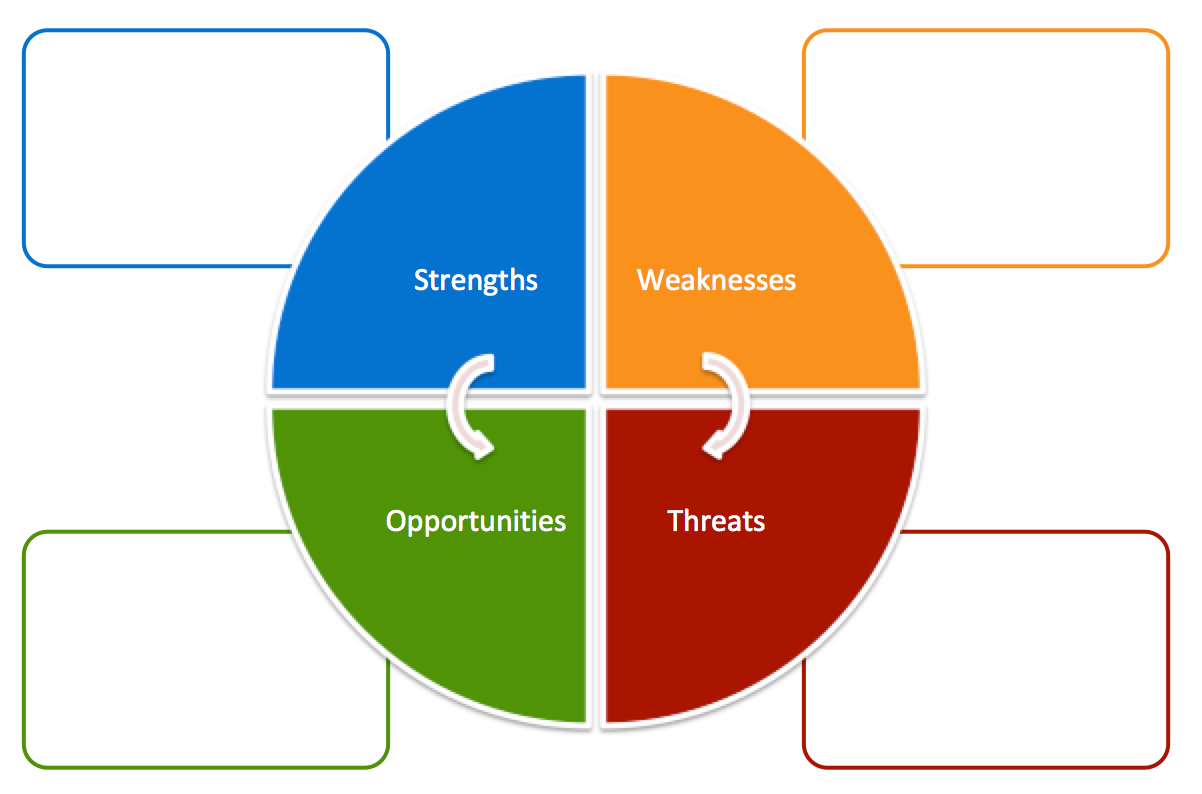
Look inside and out The customer and competitor are two key external groups that affect your product’s success. Too many companies stop there and ignore all the internal factors related to your team. Instead, consider a wider variety of factors, like those in the example below. This more encompassing view will reveal the relationships between these key considerations, providing an added layer of insights.
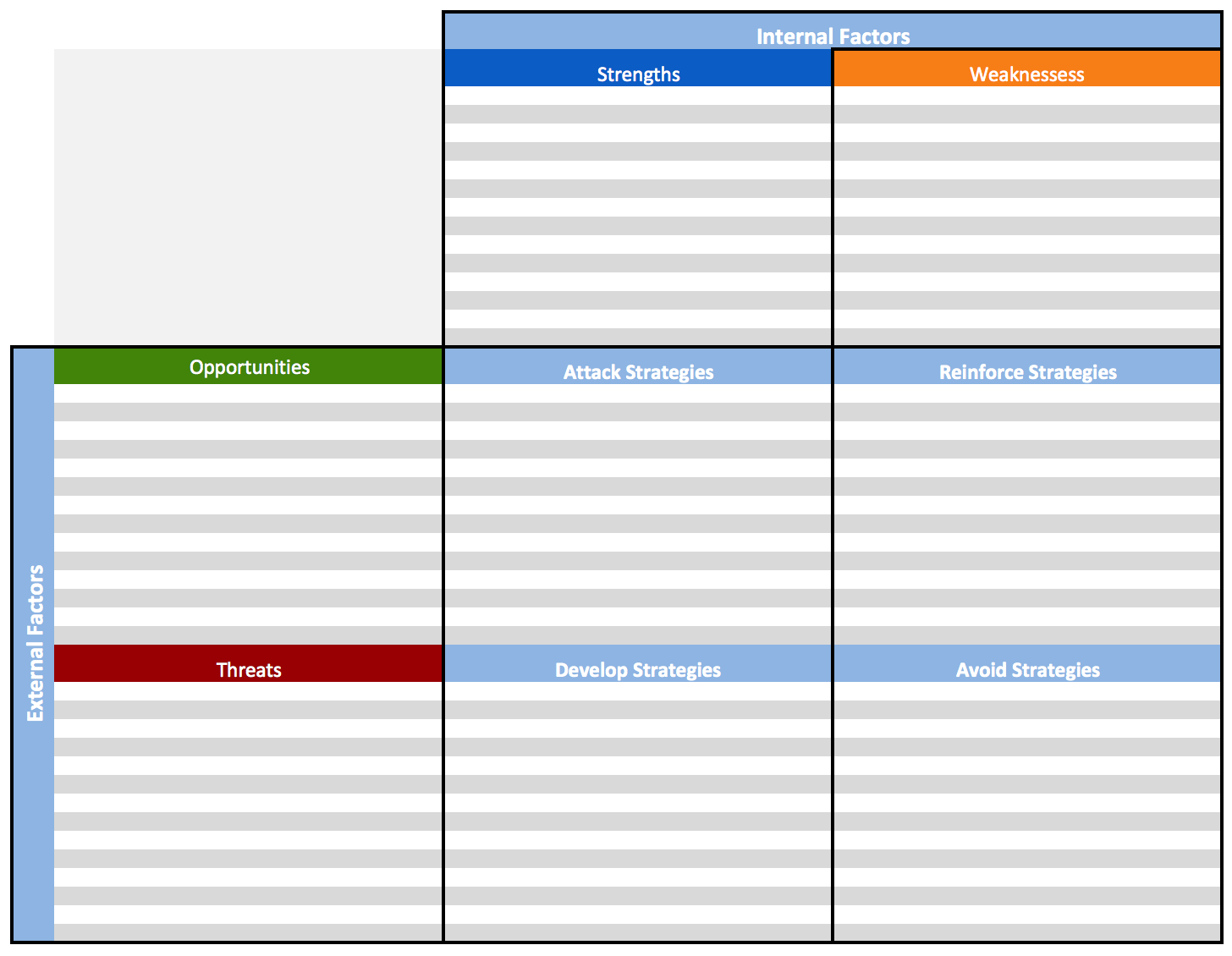
Drill down High-level views are great for context and summarizing, but sometimes you need to get more detailed examples in each area from top-down. Distilling information down to the component level lets you think more deeply about each factor as it relates to your product. You could start with a focus on strengths, like in the example below. With this perspective, you can show a picture of the market landscape that addresses exactly what your audience wants to know.
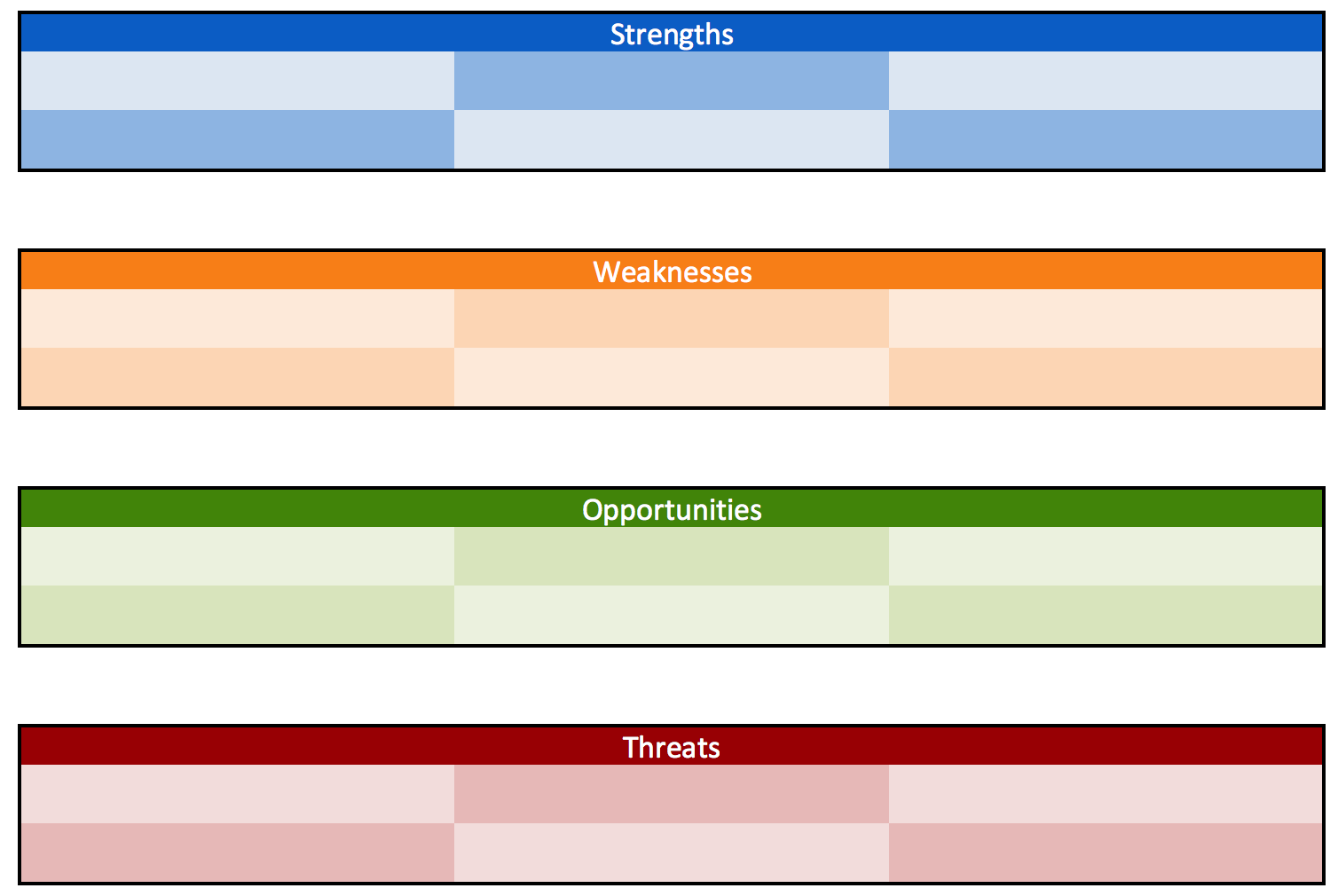
Track competition You have to really understand how your product compares to the customer’s alternative choices. It is not enough to know who your competitors are — you need to know how they stack up. Doing that requires a strategic factor-by-factor comparison within the SWOT framework. Using a competitor template like the one shown below, you can analyze your standing relative to a single player in your market or a set of them.
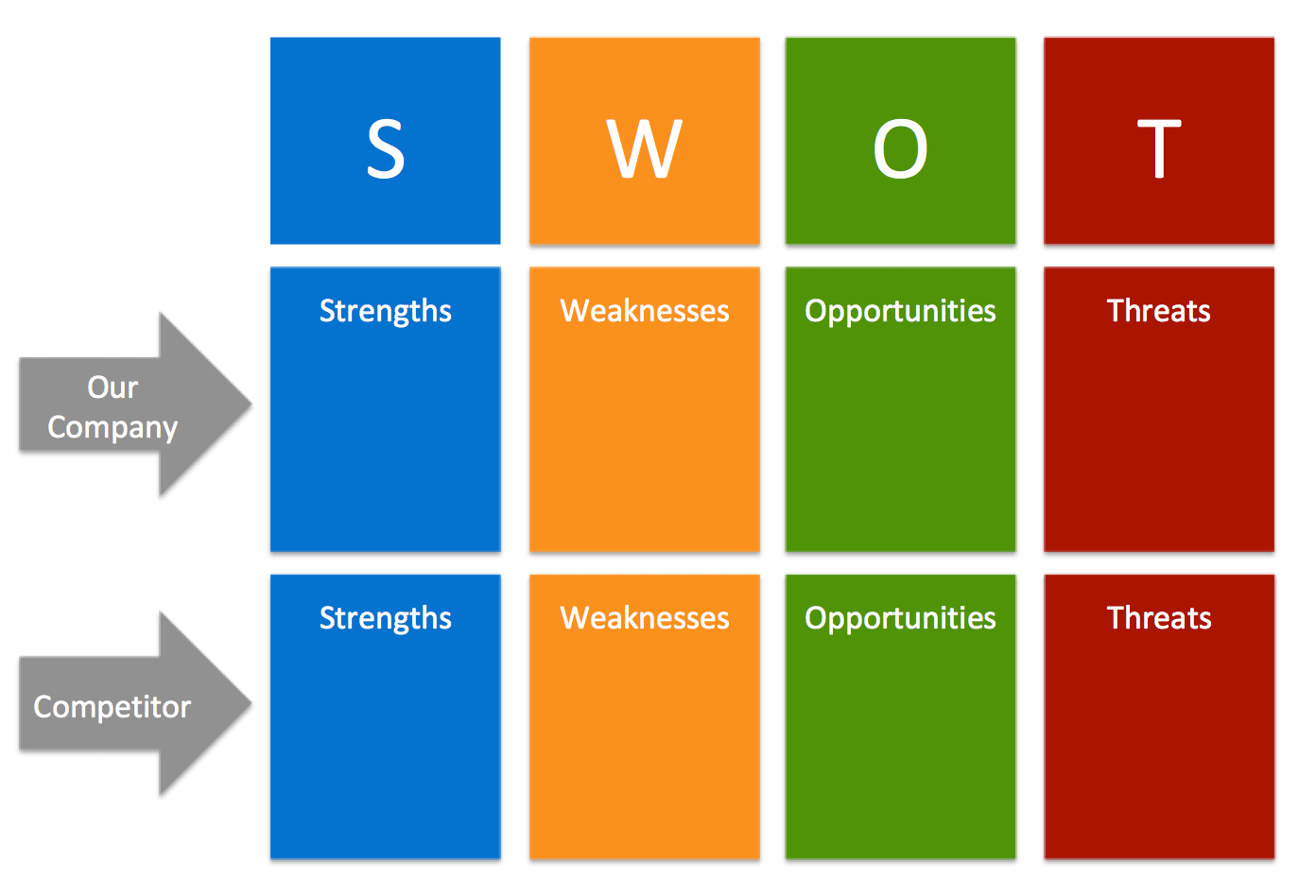
Plan growth You have given yourself and the audience a clear snapshot of the current state of your product and the market. Next comes the action plan to deliver a better customer experience — including articulating how your strategies will address each component. Doing so with a framework like this one below makes it easier for everybody to understand and support the logic behind the plan.
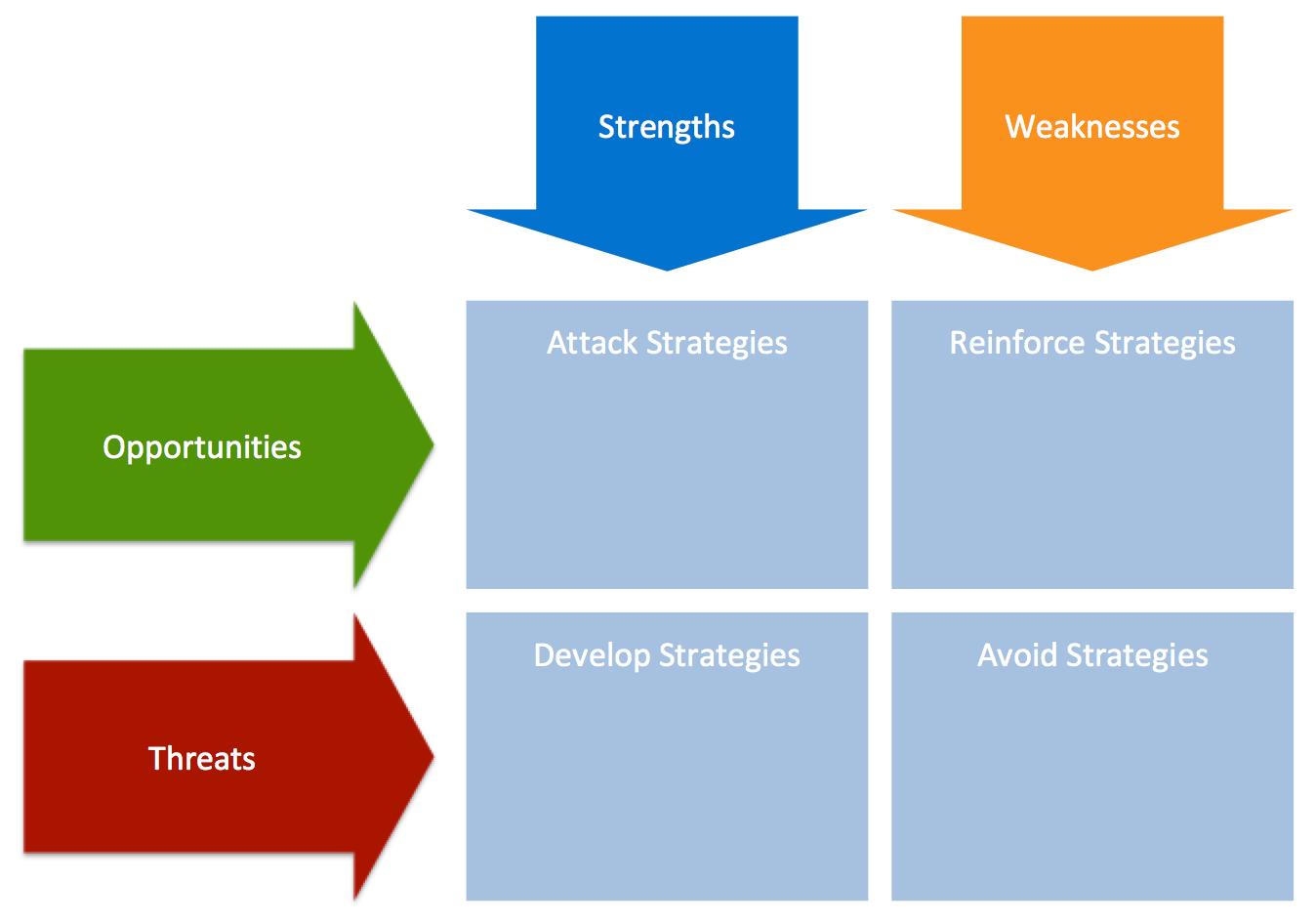
Whether you use these templates or a tool such as Aha! no product manager should be on their own when it comes to strategic planning.
As I mentioned earlier, Aha! provides even more strategic models for analyzing your market. But know that using templates for SWOT analysis is like cooking with the right pans or painting with the right brushes. You can make do without them — but good tools make your job a lot easier to produce outstanding results.
How do you use SWOT analysis templates to build great products?
Great product managers need a great tool — sign up for a free 30-day trial of Aha!
Aha! is a trademark of Aha! Labs Inc. All other company and product names may be trademarks of the respective companies with which they are associated.


